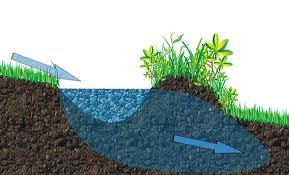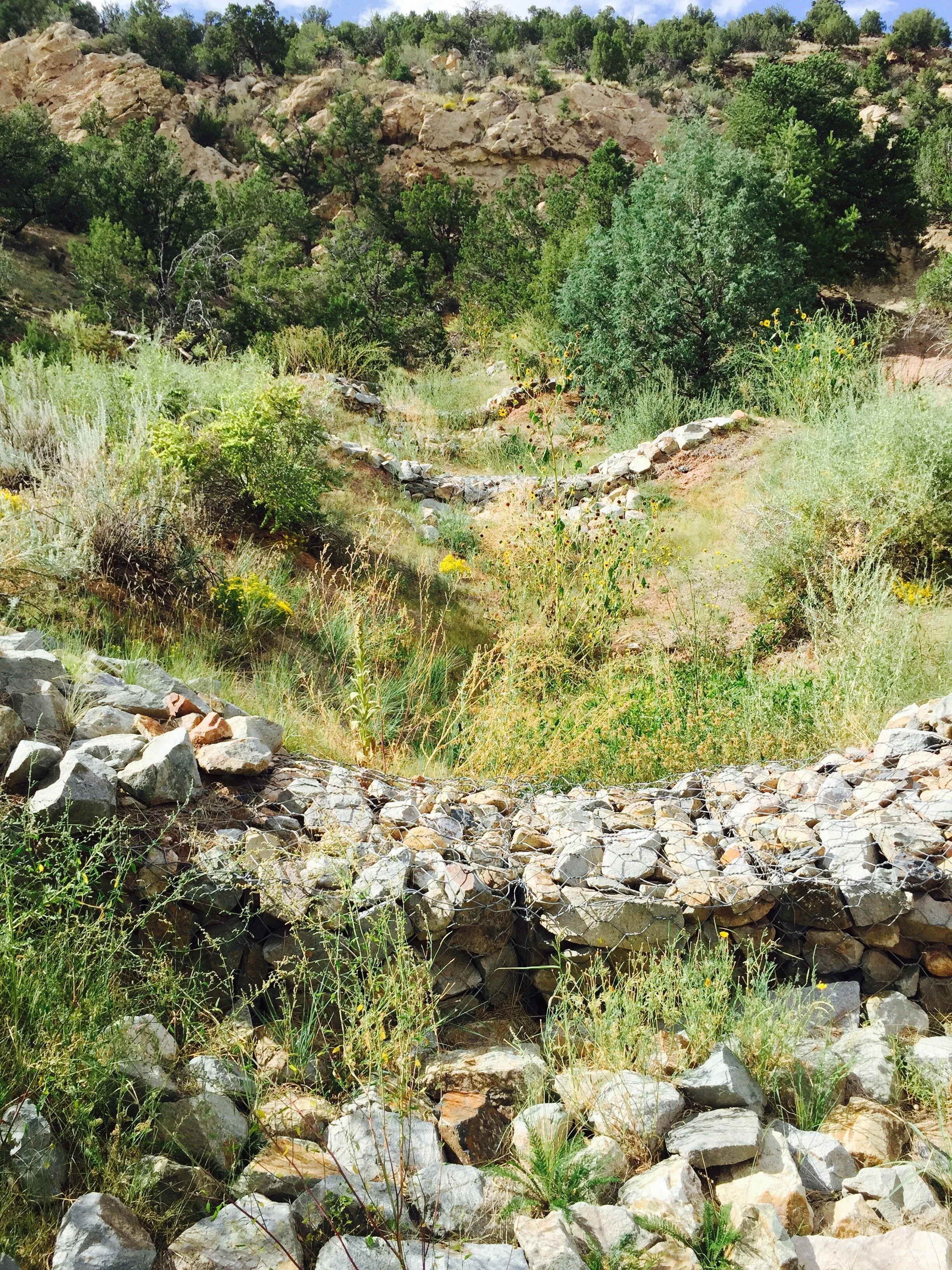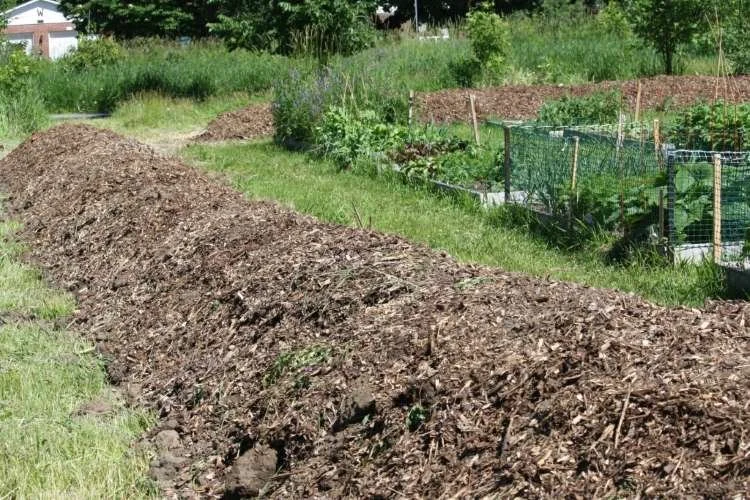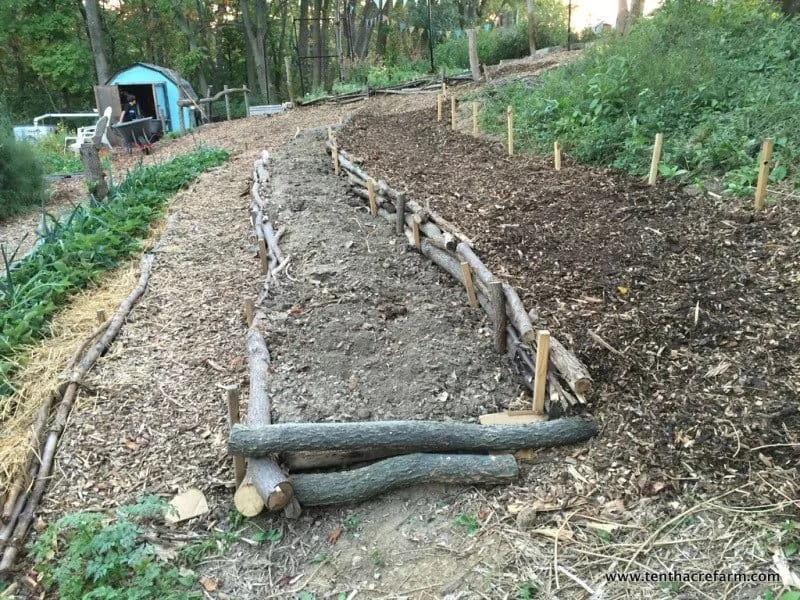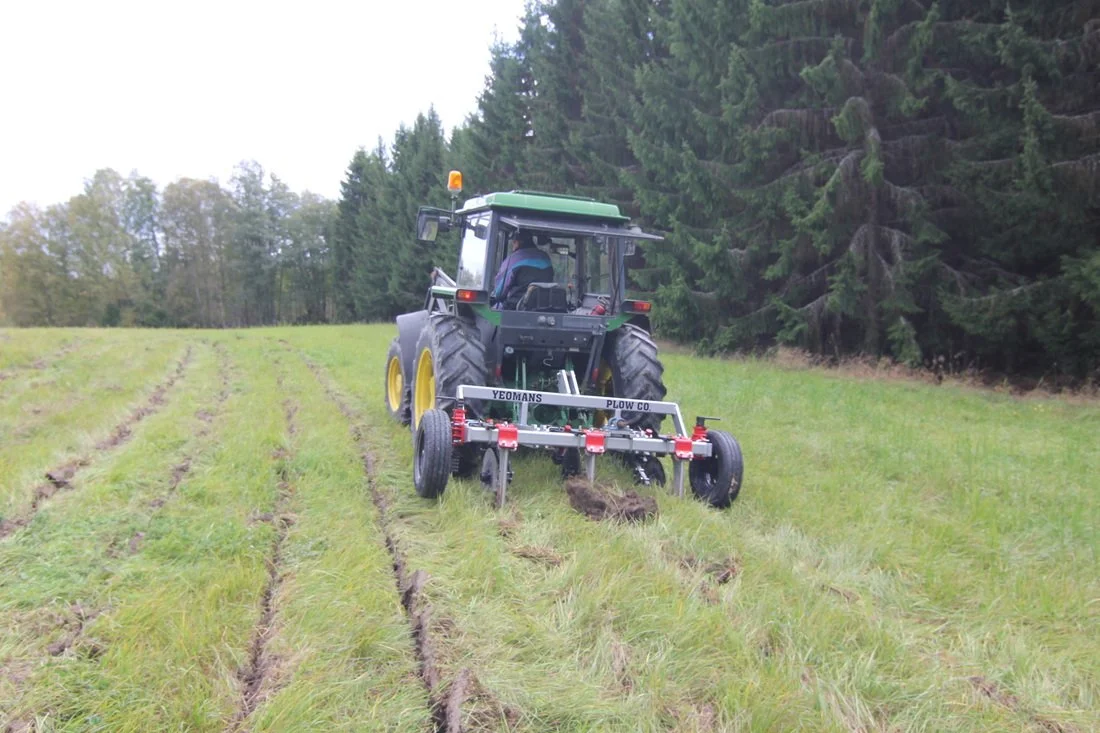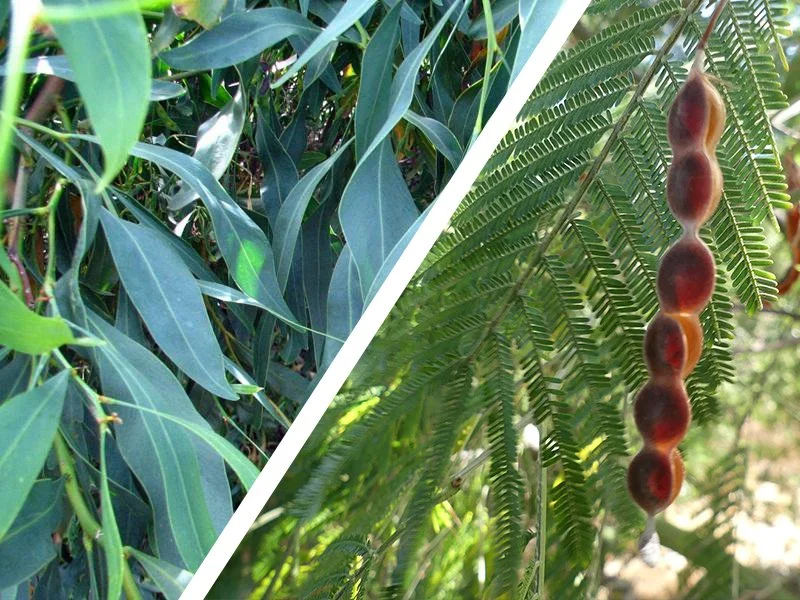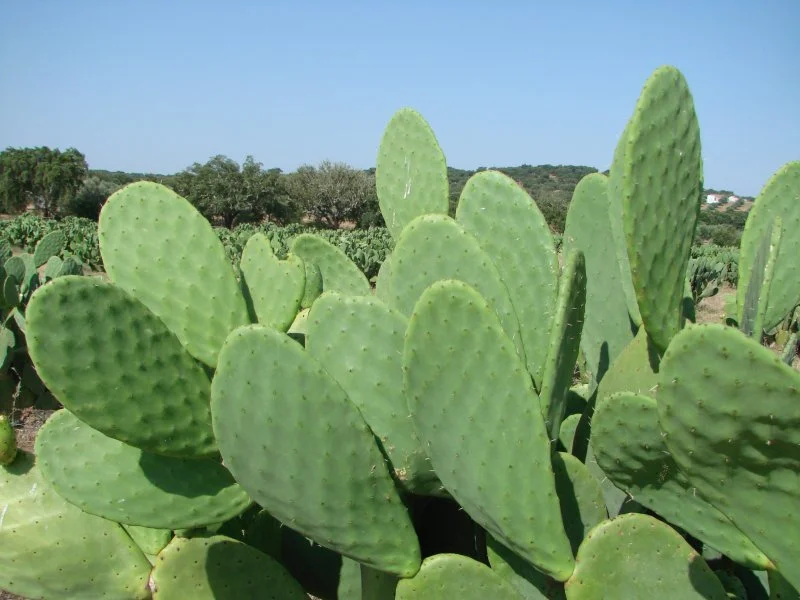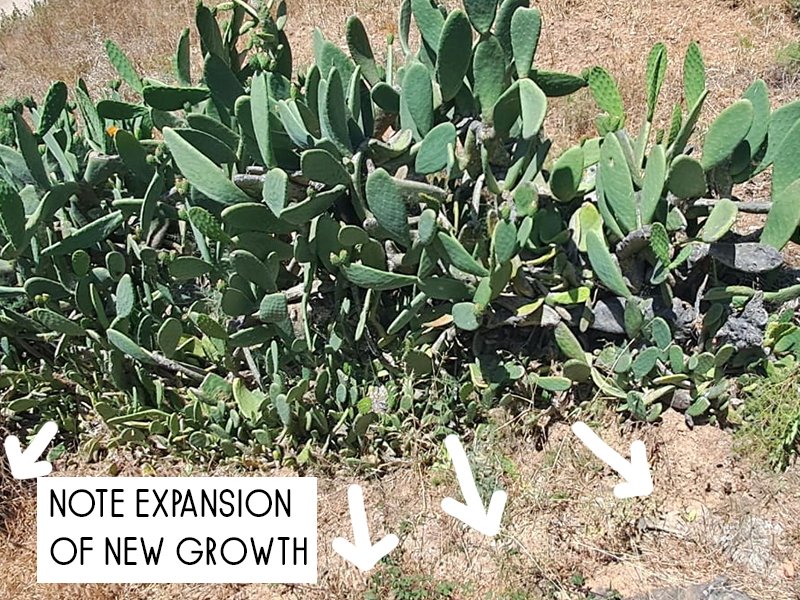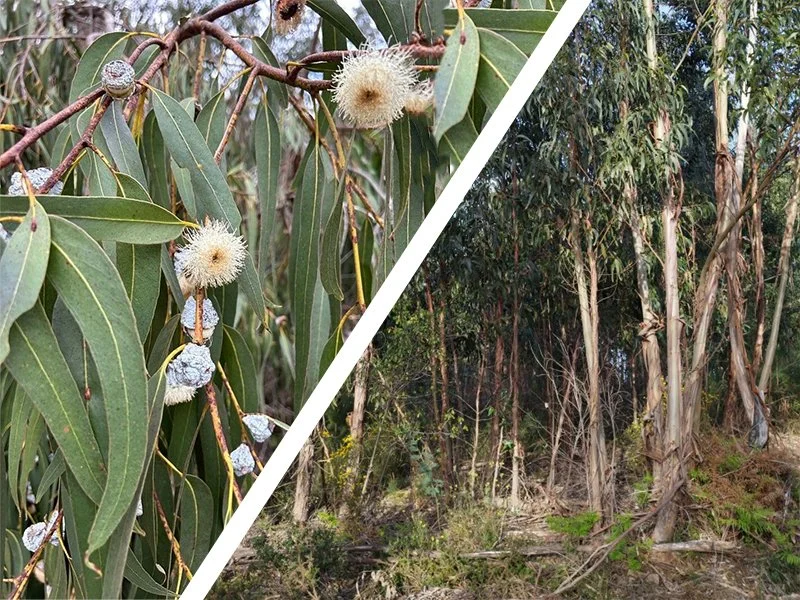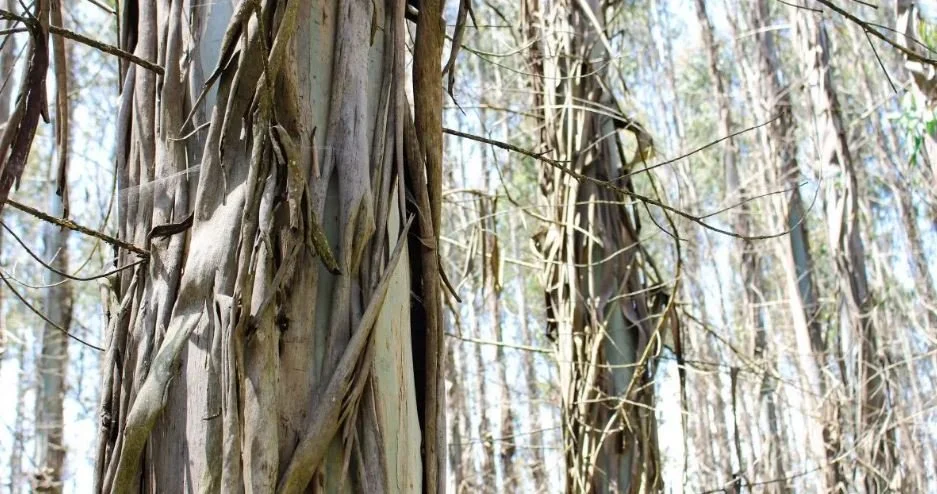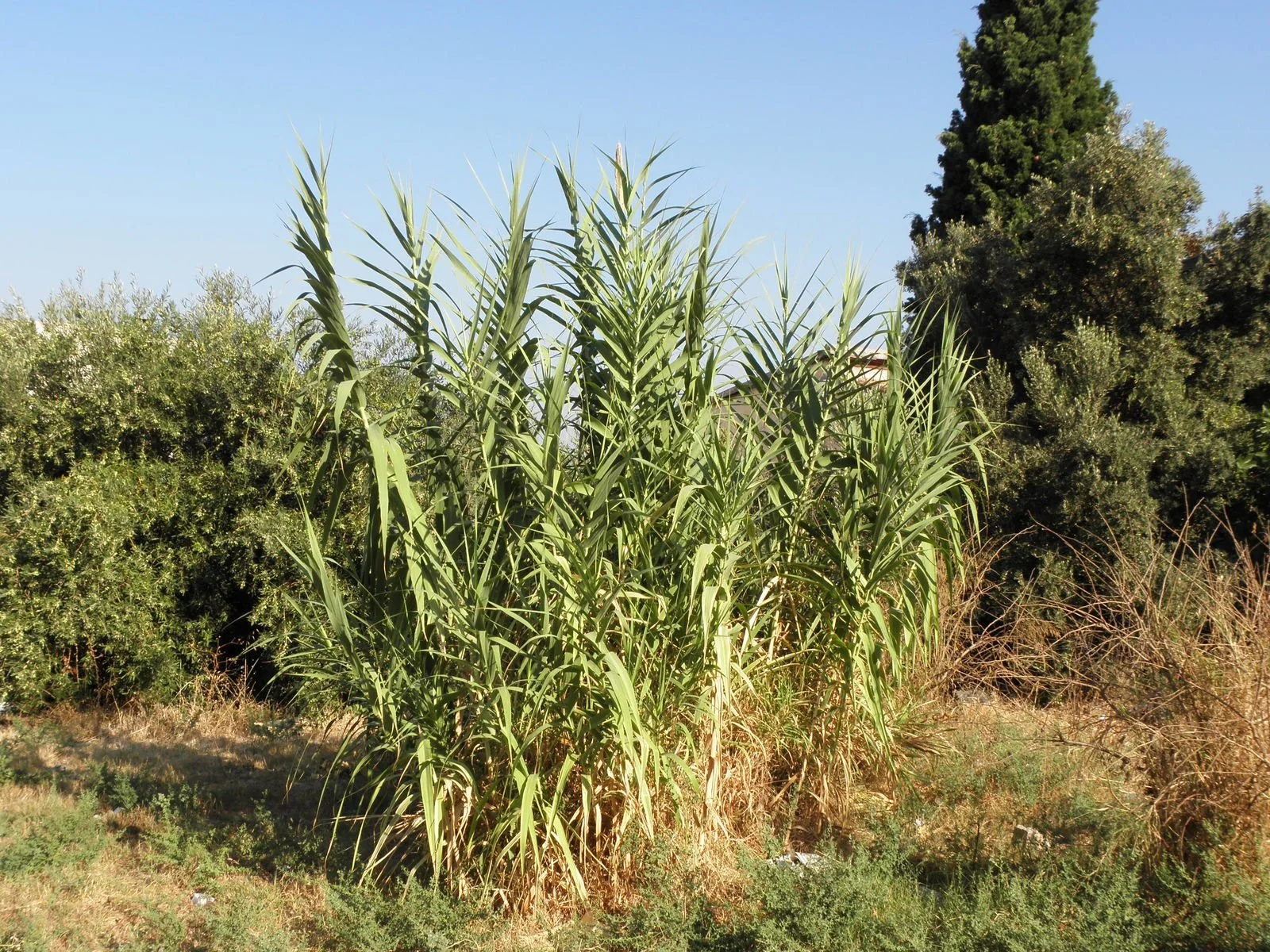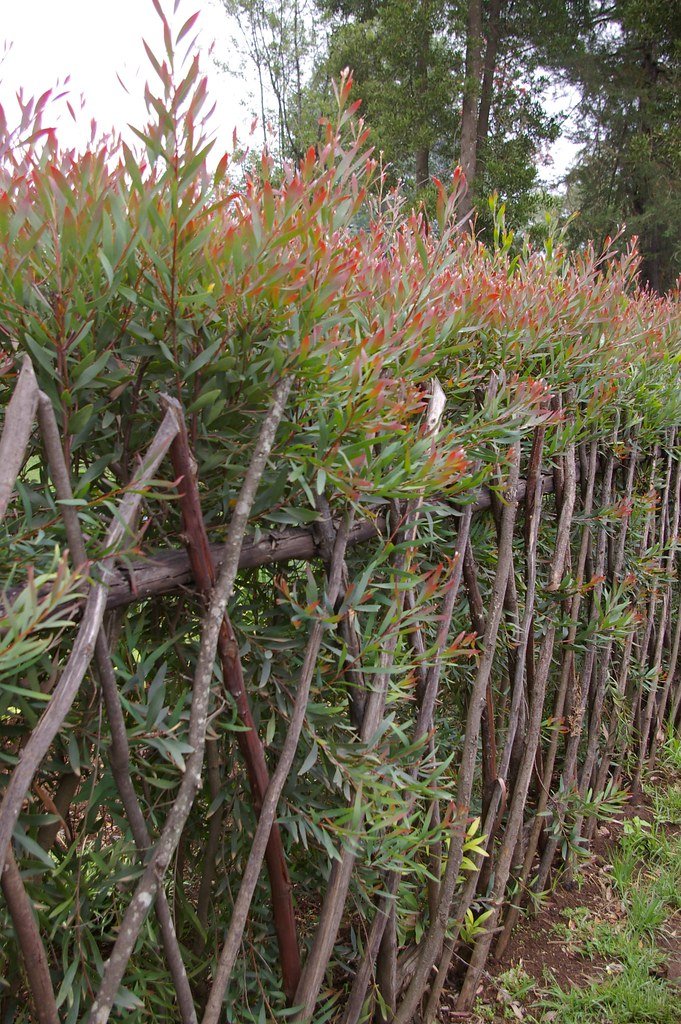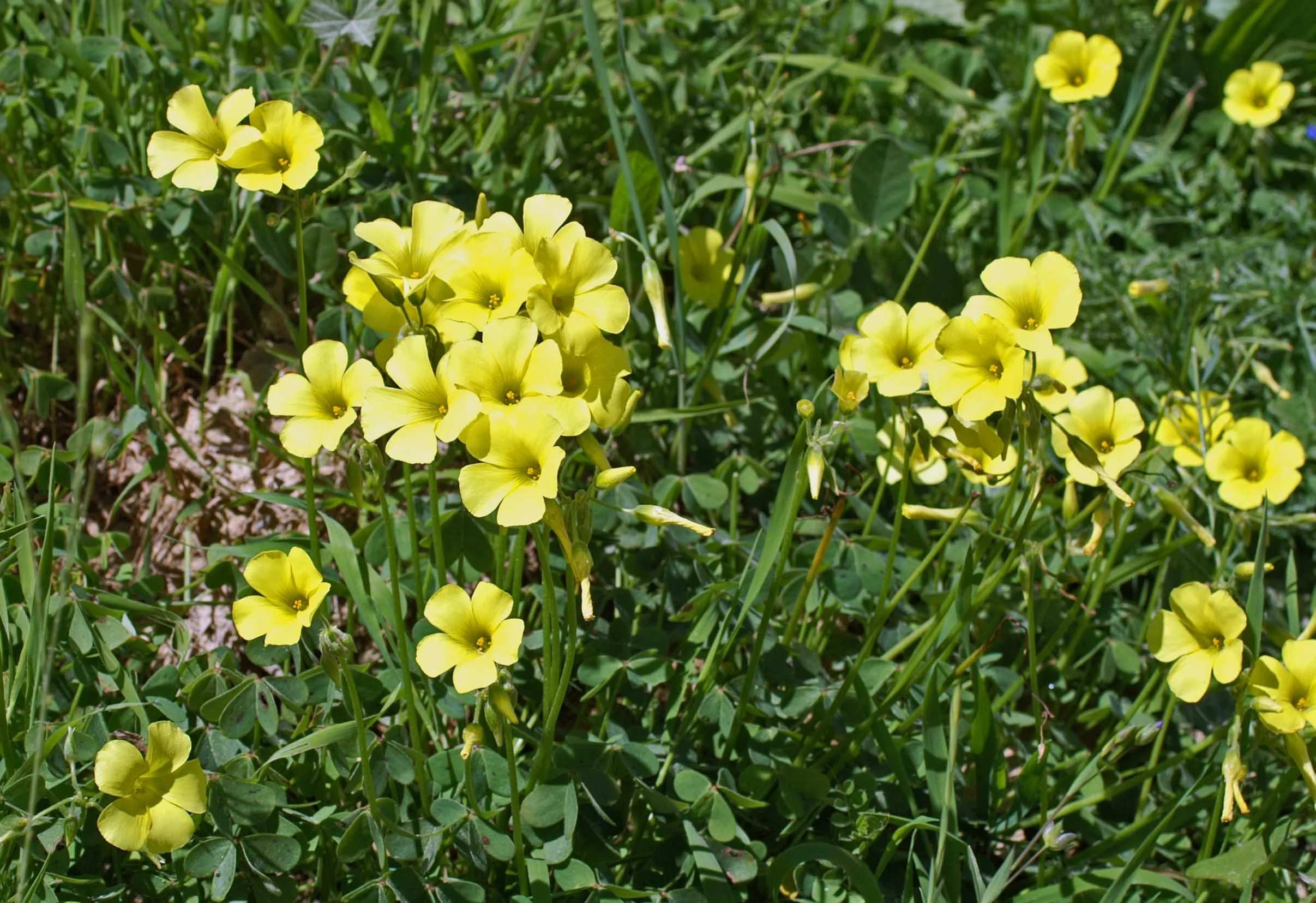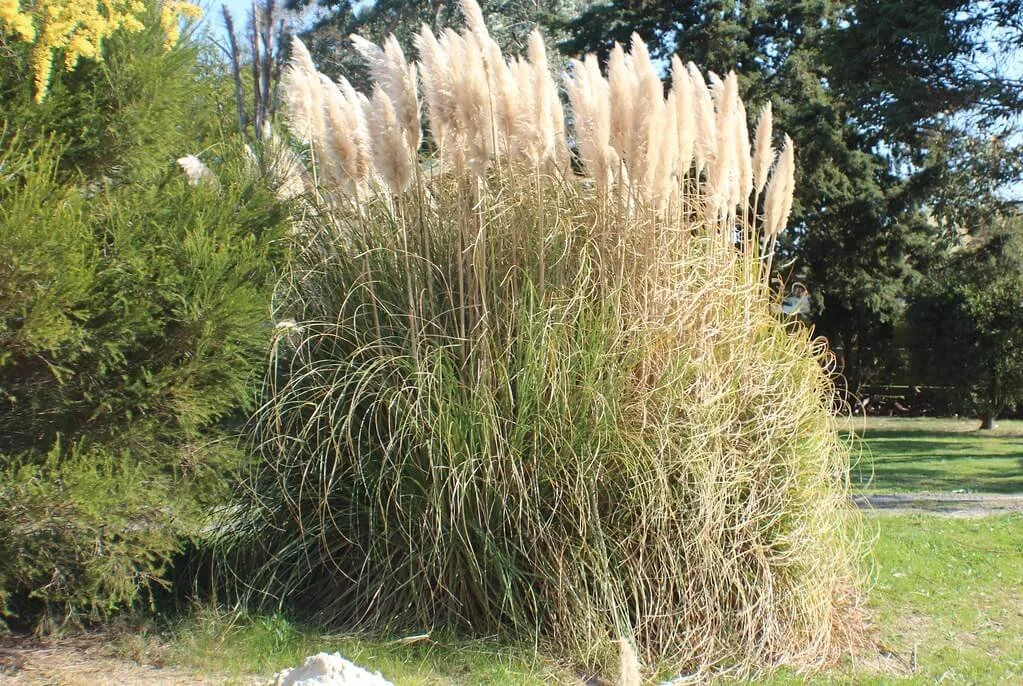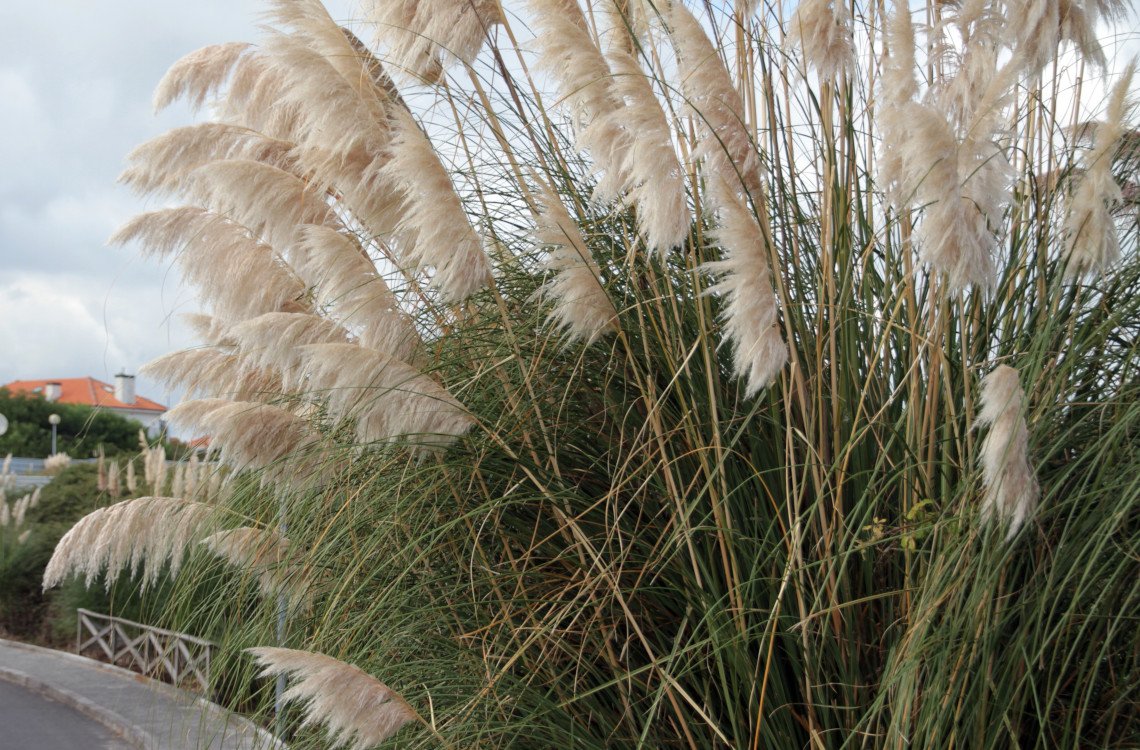11 WATER RETENSION FEATURES
Effective water management slows water flow, spreads it across the landscape, sinks it into the ground, and stores it for future use.
Here are 11 physical features that aid in slowing, spreading, sinking and storing water:
1.SWALES
2. HALF MOONS
3. ONE ROCK DAMS
4. CHECK DAMS
10. ZUNI BOWLS
5. BERMS OF CONTOUR
11. TANKS & BLADDERS
6. TERRACE
8. KEYLINE PLOWING
8. PLANTING
9. GAMBION BASKETS
1. ACACIA (various species)
Acacia - Native to Australia, was intentionally introduced into Portugal for various purposes, such as erosion control, land land regeneration, and timber production. (19th & 20th Century)
Unfortunately, they have become a major problem due to their aggressive growth and ability to form dense thickets, outcompeting native plants.
WHY IT’S BAD:
Increase fire risk (Highly flammable)
Outcompete native plants - Acacias grow very fast and form dense thickets that shade out native vegetation, reducing the variety of plant and animal species.
Alter the soil chemistry - they increases soil fertility, which might sound good—but this disrupts native ecosystems which evolved under nutrient-poor conditions.
Taking water - Acacias have deep roots that draw large amounts of water, lowering water availability for other species and potentially altering local water cycles.
Tricky and expensive to manage! - Their seeds can remain viable in the soil for decades, often triggered by fire or soil disturbance to germinate. They also reproduce by re-sprouting from stumps, clippings, and roots.
HOW TO GET RID OF IT / MANAGE
Mechanical Removal (replanting native species)
Ring barking – Remove a strip of bark around the trunk to starve the tree.
Chemical- NOT recommended
2. PRICKLY PEAR
Prickly pear - Native to the Americas, was intentionally introduced into Portugal for various purposes, such as fruit production, dye production, and as an ornamental plant.
Unfortunately, they have become a major problem in the southern regions of Portugal due to their aggressive growth and tendency to become dense, thorny thickets.
WHY IT’S BAD:
Very difficult to remove (Full of highly irritable thorns and needs to be carefully disposed of to prevent re-sprouting)
Hinder access - forms nearly impermeable barriers and thickets which are then unavailable for other purposes.
Aggressive spread - the patches quickly expand.
Supports insect life - which is devastating to other native plant species.
HOW TO GET RID OF IT / MANAGE
Mechanical Removal (cutting and uprooting while wearing protective gear) followed by deep burial of the ‘disposed’ plant so that they don’t re-sprout. An alternative disposal method is to carefully dry-out or burn the cuttings with extreme caution.
3. BRAMBLES
Brambles are native to Portugal and much of Europe. Although not an exotic species, they can be invasive in behaviour where land is abandoned or degraded.
WHY IT’S BAD:
Forms dense thickets – Spreads by arching canes and underground roots. Can quickly cover large areas and become impenetrable.
Suppresses other plants – Outcompetes grasses, herbs, and seedlings, especially in abandoned fields or forest edges.
Access and management problems – Difficult for people, livestock, and machinery to pass.
Fire hazard – Dead bramble canes become flammable in summer.
Rapid regrowth – Even after cutting, roots and fragments regenerate quickly.
HOW TO GET RID OF IT / MANAGE:
Cut repeatedly – Cut down canes every 6–8 weeks to exhaust roots. Best done over 2–3 seasons.
Dig out roots – Labor-intensive but effective for smaller patches.
Grazing – Goats or donkeys can suppress regrowth with repeated browsing.
Smothering – Cover with black plastic or mulch to block sunlight.
Replant with native shrubs or groundcovers – Helps resist re-invasion.
Herbicide – Not recommended.
4. HOTTENTOT FIG
Native to: South Africa. Introduced to Portugal and other Mediterranean countries as an ornamental groundcover and for dune stabilization.
Now considered a highly invasive plant, especially along coastal areas of southern and western Portugal.
WHY IT’S BAD:
Spreads rapidly – Grows via thick creeping stems that root wherever they touch the ground. Forms dense mats that smother native dune plants.
Outcompetes native flora – Chokes out smaller, slower-growing native species, particularly in fragile dune and cliff ecosystems.
Alters soil chemistry – Changes soil salinity and organic matter content, making it harder for native plants to re-establish.
Harms biodiversity – Reduces plant diversity and affects insects and animals that depend on native coastal vegetation.
Difficult to remove – Thick mats leave behind disturbed, eroded soil vulnerable to re-invasion or other colonizers.
HOW TO GET RID OF IT / MANAGE:
Manual removal – Pull out entire mats, including stems and roots. Best done in winter or spring when soil is moist.
Dispose of plant material – Do not leave it on site – it will re-root. Pile and let it decompose off-site or in a contained compost system.
Repeated follow-up – New shoots often return from missed fragments. Revisit site regularly for 1–2 years.
Replant with native dune species – to stabilize the soil and prevent erosion.
Avoid chemical use – Herbicides are not recommended near dunes and coastal zones due to ecological sensitivity.
5. EUCALYPTUS (various species)
Eucalyptus is native to Australia and was Introduced to Portugal for timber, pulp production, (paper) and erosion control. It’s now one of the most widespread and economically important non-native trees in the country, especially in central and northern regions.
Despite its economic value, it poses serious ecological and fire risks.
WHY IT’S BAD:
Increases fire risk – Contains volatile oils and sheds bark, creating extremely flammable litter. Eucalyptus burns hotter and spreads fires faster than native trees.
Outcompetes native species – Grows fast and tall, creating dense shade and dropping allelopathic leaf litter that inhibits other plants.
Poor biodiversity support – Eucalyptus plantations support far fewer native insects, birds, and undergrowth than oak or mixed forests.
Depletes water – Deep root systems draw significant water, which lowers groundwater and dries out nearby vegetation.
Monoculture vulnerability – Pest outbreaks and fire damage are harder to manage in large single-species plantations.
Difficult to remove – Regrows vigorously from stumps and roots. Seeds spread easily and remain viable for years.
HOW TO GET RID OF IT / MANAGE:
Mechanical removal – Cut trees and grind or remove stumps to prevent resprouting. Labor-intensive but effective.
Ring barking – Remove a strip of bark around the trunk to starve the tree.
Replant native trees – Especially cork oak, holm oak, medronheiro
Chemical treatment – Not recomended
6. GIANT REED “canash” (Arundo donax )
This species is native to Asia and the Mediterranean region. It was Introduced widely around the world for the purpose of erosion control, basket weaving, roofing material, and as a windbreak.
In Portugal, especially in riparian (river) areas, it has become a problematic invasive species.
WHY IT’S BAD:
Spreads aggressively – Propagates via thick rhizomes, not seeds. A single fragment can regenerate a new stand. Forms dense monocultures, especially along rivers.
Chokes riverbanks – Outcompetes native riparian plants, reducing habitat diversity and destabilizing river ecosystems.
Increases fire risk – Tall, dry stems create large amounts of flammable biomass in summer.
Consumes water – Although it grows in wet areas, it uses large volumes of water, which can reduce streamflow and lower the water table.
Alters flooding patterns – Dense growth changes how rivers flood, increasing sedimentation and erosion elsewhere.
Very hard to remove – Deep rhizomes and rapid regrowth make eradication labor-intensive and long-term.
HOW TO GET RID OF IT / MANAGE:
Mechanical removal – Cut and dig out rhizomes. Requires repeated follow-up for several years. Remove biomass from site.
Solarization – For small areas: cut down, cover with black plastic for 6–12 months to smother regrowth.
Monitor and repeat – Total removal usually takes 3–5 years of consistent effort.
Do not burn or mulch – Fragments can survive and spread if not properly destroyed.
7. WILLOW-LEAVED HAKEA
Native to Australia, this species was Introduced to Portugal as an ornamental shrub for hedging, especially in rural properties and fire-prone areas.
It is now invasive, particularly in central and southern Portugal.
WHY IT’S BAD:
Highly invasive – Spreads rapidly by seed and resprouts after cutting or fire. Escapes gardens and invades forests, shrublands, and riparian areas.
Forms dense thickets – Shades out native plants, reducing biodiversity and disrupting ecological succession.
Fire-prone – Contains oils and resins that increase fire intensity and spread.
Difficult to remove – Seeds are long-lived in the soil and fire-stimulated, and plants re-sprout from stumps and roots.
HOW TO GET RID OF IT / MANAGE:
Cut and remove – Cut shrubs at ground level and dig out roots to prevent regrowth. Dispose of all plant material (especially seed pods).
Ring barking – May work on mature trees if cutting is not possible.
Burning not recommended – Fire stimulates seed release and can worsen the problem.
Monitor and repeat – Requires regular follow-up for several years to catch seedlings and resprouts.
Replant with native shrubs – Use fire-resistant and non-invasive alternatives like Arbutus unedo, Phillyrea angustifolia, Cistus spp., or Myrtus communis.
8. AMERICAN AGAVE
This plant is native to Mexico and the southwestern USA. It was Introduced to Portugal as an ornamental plant and for erosion control on coastal cliffs, slopes, and dry gardens. It is now invasive in southern and western Portugal, especially in coastal zones.
WHY IT’S BAD:
Forms dense clumps – Spreads via suckers (clonal shoots), forming large, impenetrable colonies that crowd out native vegetation.
Disrupts fragile ecosystems – Especially damaging to coastal and dry Mediterranean habitats
Difficult for wildlife – Sharp spines and dense structure prevent movement of native animals and birds, and offers poor habitat or food value.
Soil erosion after removal – Agave roots stabilize cliffs and slopes; sudden removal without replanting can destabilize them.
Sharp and dangerous – Leaf tips are sharp and can cause injuries to people, pets, and livestock.
Hard to kill – Roots and bulbils regenerate easily. Even after the main plant flowers and dies, numerous clones are usually already growing nearby.
HOW TO GET RID OF IT / MANAGE:
Manual removal – Dig out the entire plant, including the deep roots and suckers. Use caution and protective gear due to sharp spines.
Cut and dry – Cut rosettes into pieces and let them dry out completely off-site (they can reroot if left on soil).
No fire – Burning is ineffective and hazardous due to the plant’s structure and location.
Replant immediately – Use native, deep-rooted species.
Ongoing monitoring – Check for and remove new suckers and seedlings for at least 1–2 years.
9. BERMUDA BUTTERCUP
This plant is native to South Africa and was introduced to Europe in the 19th century as a garden ornamental.
It is now one of the most widespread invasive plants in Portugal, especially in southern regions and along coastlines, fields, orchards, roadsides, and gardens.
WHY IT’S BAD:
Spreads extremely fast – Reproduces by underground bulbs (not seeds in Portugal), forming dense carpets of growth.
Outcompetes native plants – Smothers local groundcover and wildflowers by blocking light and space.
Creates monocultures – In high densities, few or no other plants can grow alongside it.
Alters soil conditions – Changes nutrient cycling and soil pH, making it harder for native species to re-establish.
Hard to eliminate – Tiny underground bulbs break off easily and can survive for years, even after plant removal.
Highly persistent – Regenerates rapidly every autumn, especially after disturbance or soil movement.
HOW TO GET RID OF IT / MANAGE:
Manual removal (limited effectiveness) – Pulling plants is only helpful before flowering, and only if bulbs are removed (very difficult).
Smothering with mulch or cardboard – Can suppress growth in garden settings. Needs to be maintained over multiple seasons.
Soil solarization – In small areas, covering the soil with clear plastic in summer may help kill bulbs via heat.
No tilling – Disturbing soil spreads and multiplies the bulbs.
Replant with natives – Establish competitive, fast-growing native groundcovers.
Monitor for years – Eradication is difficult and typically requires 3–5 years of persistence.
10. PAMPAS GRASS (Cortaderia selloana)
This species is native to South America and was introduced to Portugal and much of Europe as an ornamental plant in gardens, for landscaping, and erosion control.
It is now a high-impact invasive, especially along roadsides, coastlines, riverbanks, and disturbed soils.
WHY IT’S BAD:
Spreads rapidly – Each plume can produce tens of thousands of wind-dispersed seeds that travel long distances.
Forms dense, tall clumps – Reaches up to 4 meters high, shading and crowding out native plants.
Alters ecosystems – Colonizes wetlands, dunes, and open land, reducing biodiversity and changing habitat structure.
Fire hazard – Dry leaves and seed heads are highly flammable. Increases fire intensity, especially in dry coastal areas.
Sharp leaves – Serrated leaf edges can cut skin and are hazardous to people and animals.
Hard to control – Resilient to drought, grazing, and many standard control methods. Spreads aggressively if left unmanaged.
HOW TO GET RID OF IT / MANAGE:
Cut before flowering – Remove plumes before seeds mature (typically late summer to autumn). Bag and dispose of seed heads safely.
Dig out entire root mass – Labor-intensive but effective. Must remove crown and roots to prevent regrowth.
Burning not advised – Pampas regrows quickly after fire and may worsen infestations.
Prevent spread – Never plant ornamental pampas grass. Remove young plants before they mature.
Replant with native species – On coastal or open land, use native grasses, shrubs, or dune-stabilizing species.

